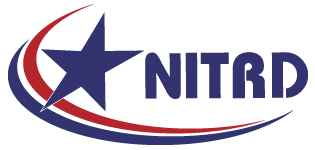Logistics
- Event: Toward Innovative Spectrum Sharing Technologies: A Technical Workshop On Coordinating Federal Government/Private Sector R&D Investment
- Date: July 26, 2011
- Location: Boulder, CO
In June, 2010, the President issued a memorandum, “Unleashing the Wireless Broadband Revolution”, which identified the importance of providing adequate spectrum “to support the forthcoming myriad of wireless devices, networks, and applications that can drive the new economy.” To help “wring abundance from scarcity,” the memorandum called upon the Secretary of Commerce to “create and implement a plan to facilitate research, development, experimentation, and testing by researchers to explore innovative spectrum-sharing technologies…”
In response to this charge, the National Information Technology Research and Development (NITRD) program created the Wireless Spectrum R&D Senior Steering Group (WSRD SSG), which brings together representatives of all of the federal agencies that conduct or support spectrum-related research. Upon its formation in November, 2010, and at the urging of the U.S. Chief Technology Officer, the WSRD group quickly recognized the importance of reaching out to private industry and academia as an avenue of coordinating national wireless R&D investments.
In July, 2011, the WSRD SSG held its first workshop to engage key representatives of the industrial and academic communities. The workshop was hosted by the National Institute of Standards and Technology at its Boulder, Colorado, facility, and was held in conjunction with the International Symposium on Advanced Radio Technologies. The workshop was structured as a roundtable discussion among technical experts and researchers from private industry, public safety, and academia to explore ongoing spectrum-related Federal Government R&D activities as listed in an inventory created by the WSRD SSG members. The participants were asked to explore the inventory and offer their thoughts on a national-level wireless technology initiative. They were asked to suggest avenues of research that the participants believe are presently underrepresented in federal R&D and that are not being pursued in private industry research laboratories. The goal was to focus on identifying R&D that may have large potential payoffs for the national wireless industry and the nation’s economy at large. In addition, it needed to be consistent with the Federal Government’s role in sponsoring “high-risk high-reward” research.
Documents/Publications/References
- Toward Innovative Spectrum Sharing Technologies: A Technical Workshop On Coordinating Federal Government/Private Sector R&D Investment, NITRD Wireless Spectrum R&D Senior Steering Group; Networking and Information Technology Research and Development Subcommittee, November 2011.
- WSRD Interim Report 1, June 2011.
- Wireless Spectrum R&D Project Inventory, February 1, 2013.
- Attachment A: Topic Areas, July 2011.

